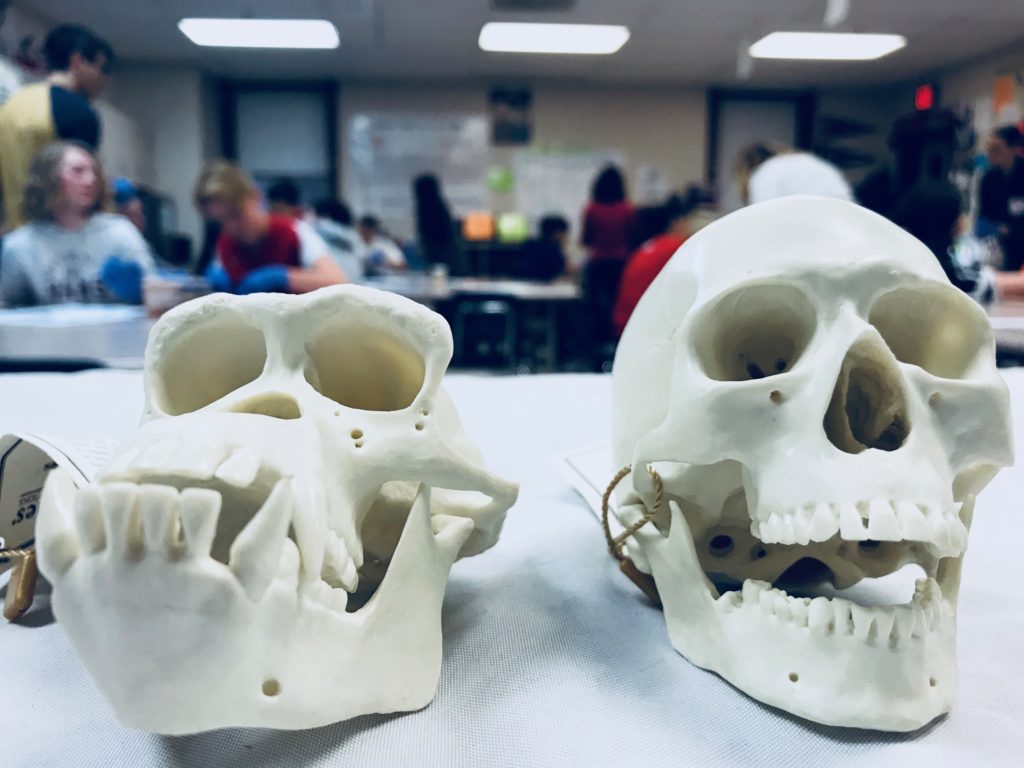Post by Denesa Lockwood Oberbeck, OHSU/NW Noggin Board
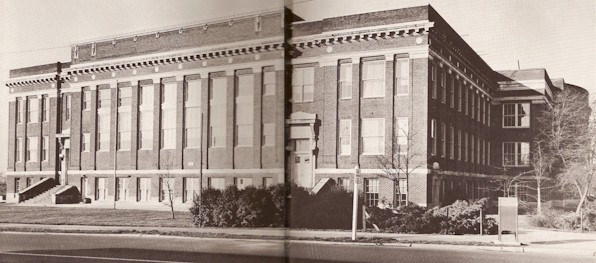
Fort Vancouver High School (FVHS) in 1961
There is no substitute for hands-on learning. This is often the first-cited premise for justifying biological dissections. This author (and lots of other educators) believe in this premise whole-heartedly, as do an always eager group of NW Noggin volunteers, who arrived at Fort Vancouver High School (“Home of the Trappers”) very early (7:30am!) on a Thursday morning to help with a day of sheep brain dissections…
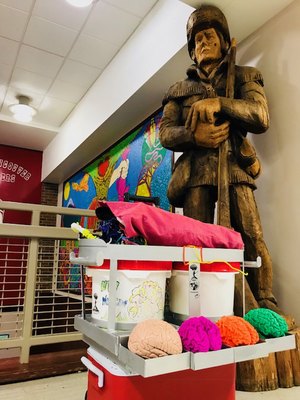
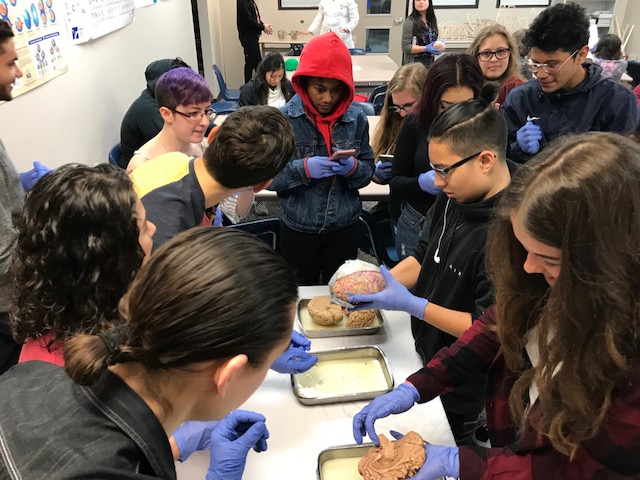
These are not sheep brains..!
It was early – and unlike nearby Evergreen Public Schools, Vancouver still has no plans to shift their opening classes to a more neuro-protective time of day. In fact, one staff member remarked that “many kids were lazy,” and that we were “entitled to our opinion” about whether more sleep was essential for developing healthy adolescent brains! We gamely noted that evidence-based research was not just someone’s opinion…
LEARN MORE: Brains, biofeedback & SLEEP @ Fort Vancouver!
LEARN MORE: A Look at What the Public Knows and Does Not Know About Science
LEARN MORE: Civic Scientific Literacy in the United States in 2016
LEARN MORE: How People Approach Facts and Information

We had a varied contingent, including Iris Guttierez and Ruth Marigomen from WSUV, Noggin Resource Council member Joey Seuferling; Tyler Braly, Aaron Eisen, and Ali Mack from Portland State University; Denesa Lockwood Oberbeck from OHSU and the Noggin Board; and of course our fearless leaders Bill Griesar and Jeff Leake, and with donuts and coffee gratefully provided by Bill, we set up to start slicing…
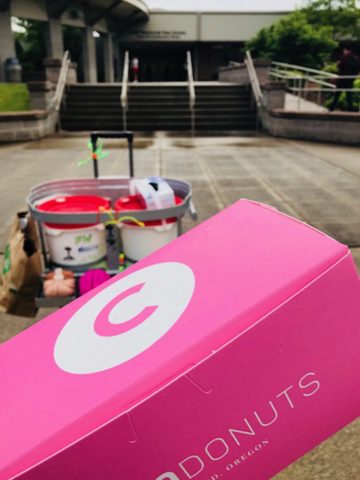

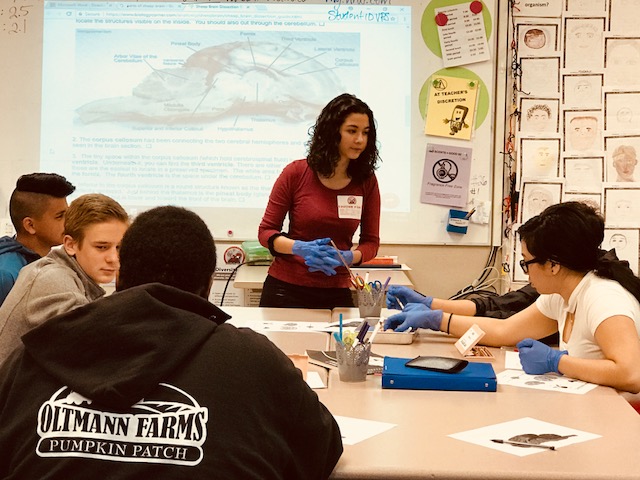
“Pancakes and Brains“
FVHS is one of the oldest high schools in the region (est. 1888), and was renamed the FVHS Center for International Studies in 2016. It is the only school in the district with an English Language Learning program (ELL), and approximately 1/3 of Trapper students speak a language other than English at home…
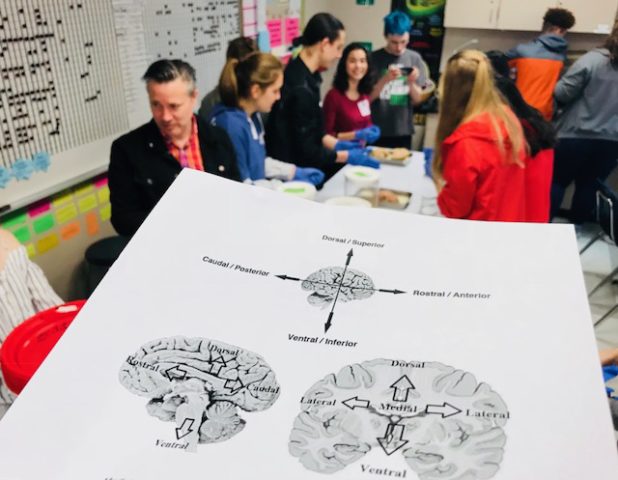
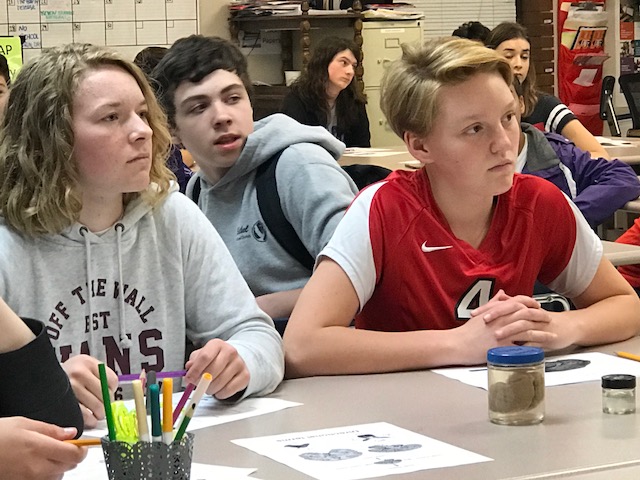
After a brief introduction in each class, we set about to help over 200 high school students learn for themselves what it is like to peer into a brain. Preserved sheep brains – but real brains nonetheless, purchased by the school district through (of course!) amazon.com. We worked with the same great science teachers we’d had the honor to meet on several previous visits, including Coreyanne Russell, James Cederstrom and Ahran Jang…

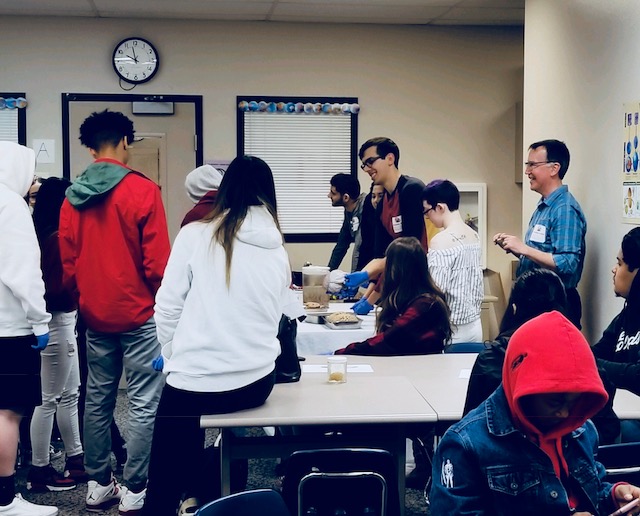
During the dissections, we had the opportunity to field many questions on multiple topics. The first is almost always “Where did you get those brains?,” which allowed us to discuss the relative ease with which one can obtain a preserved wet specimen, but also to dive deeper into the ethics of animal research and the correct channels to obtain these resources (as well as body donation programs!).
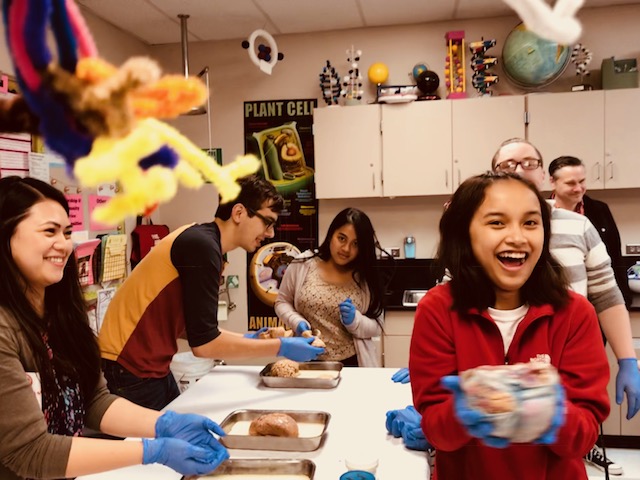
LEARN MORE: BioGifting Brains
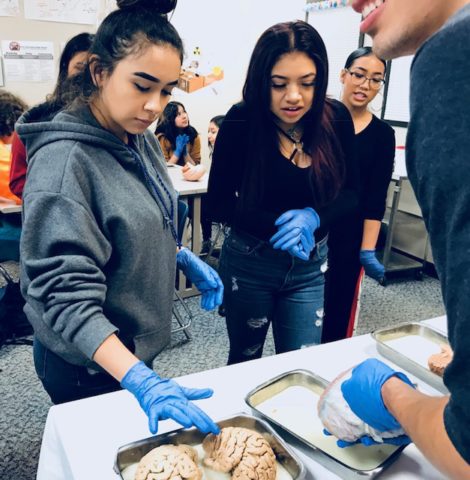
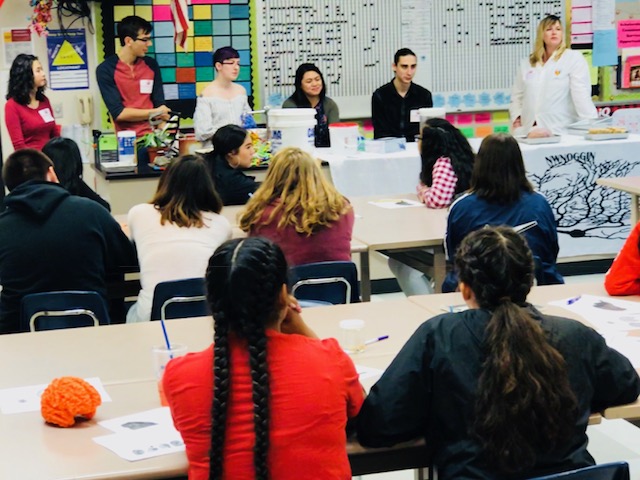
We don’t often have to justify curriculum to students as they are pretty used to studying what they are directed to without much question, but biological dissections are often an exception. Some students wonder why they should participate in something like this when “they aren’t going to be sheep doctors” or “scientists…”
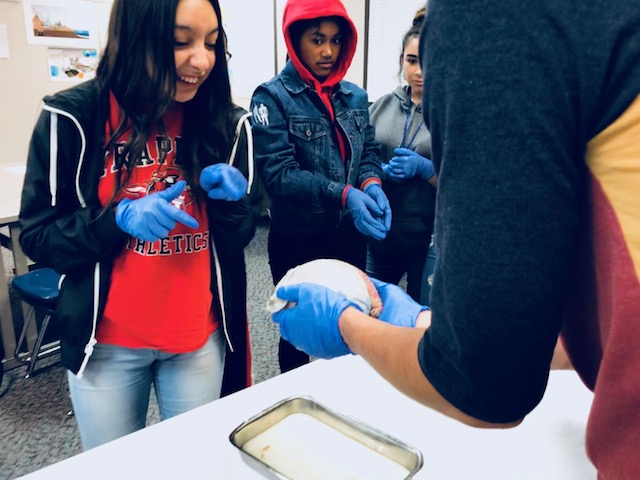
I explained how this is not only learning about the sheep brains per se, but about the relationships between brain and body, the importance of using model organisms to better understand human anatomy and pathology, and how biology lends insight to other fields such as psychology, computer science, engineering, chemistry and math. Additionally, this is a great opportunity to introduce and expand on how many of our terms in biology come from Latin and Greek roots (including the word biology itself, “bio” = life, and “ology” = the study of)!
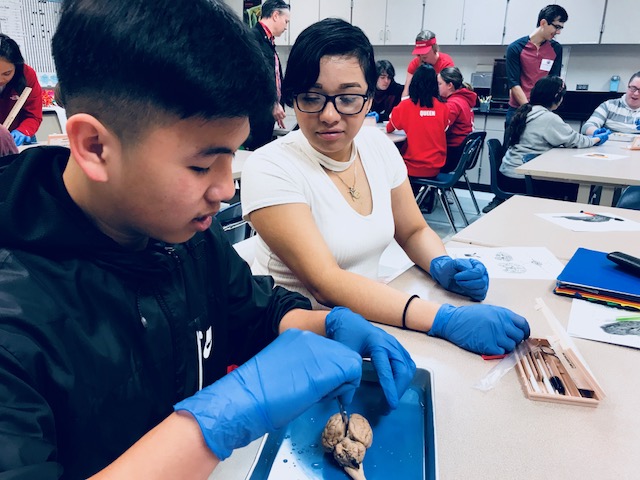
Finally, the students made their first cuts!
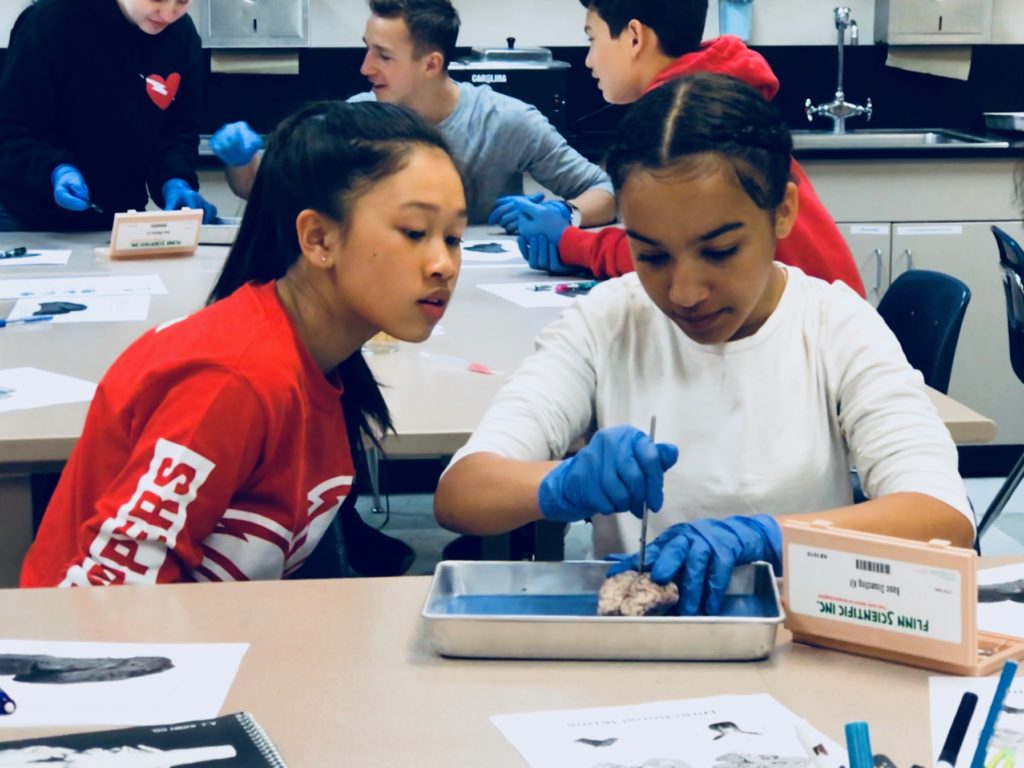

Nice mid-sagittal cut…
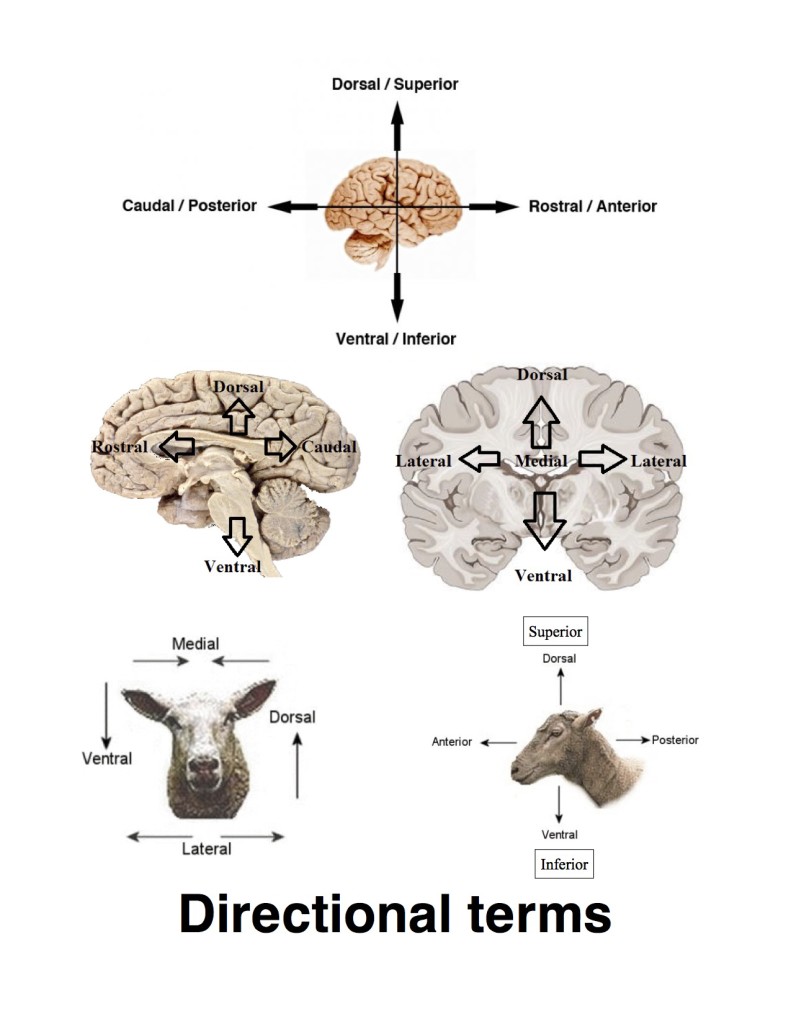
LEARN MORE: Directional terms handout
The hesitation, bravery and confidence that are apparent in that one slice are a wonder to behold…
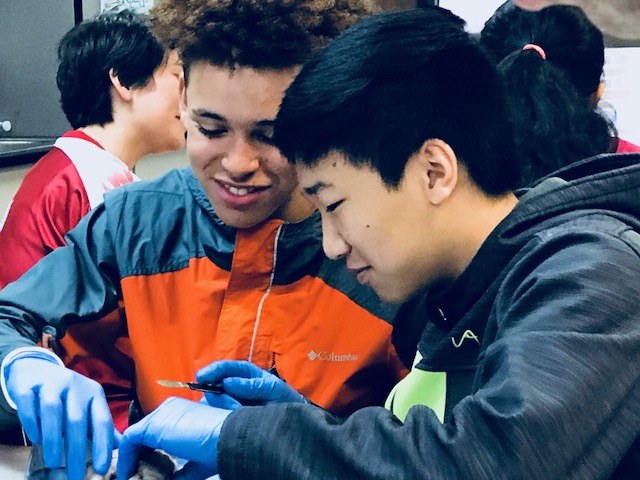
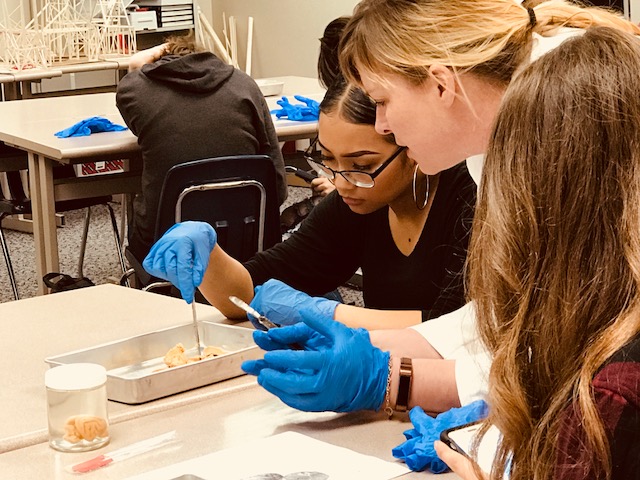
I hope the students felt as proud of themselves as I did watching them perform that task. I know seeing multiple earthworm “hearts” in person was one of the first in a series of discoveries that led me to a lifetime love affair with science, and I hope many of these students will feel the same way after today.
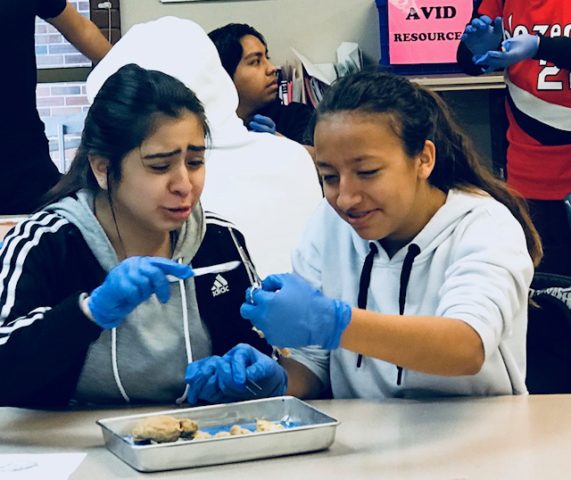
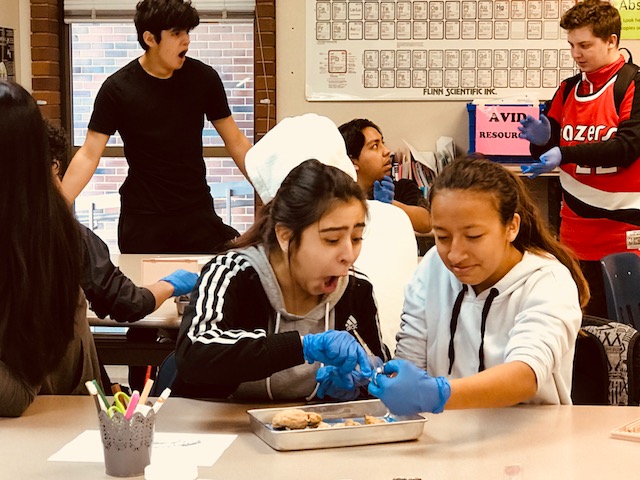
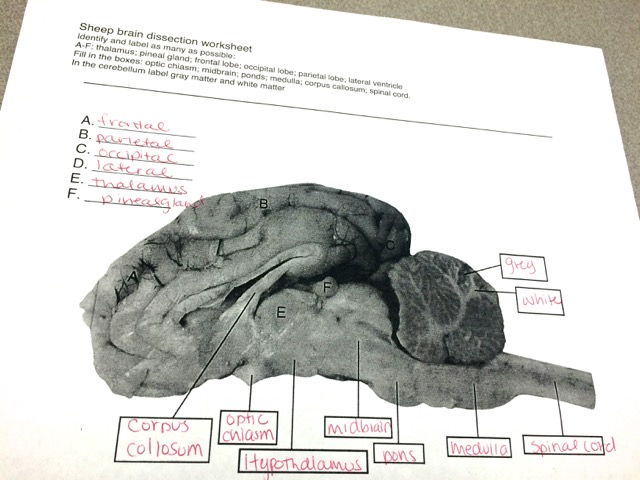
LEARN MORE: Sheep brain dissection
The power of performing examination and analysis with your own hands is unmatched. No matter how many hours you spend with a book or even a 3D electronic app or diagram, seeing and seeing into an actual brain makes it much clearer, and studies have shown that students who perform dissections learn more effectively than those who do not.
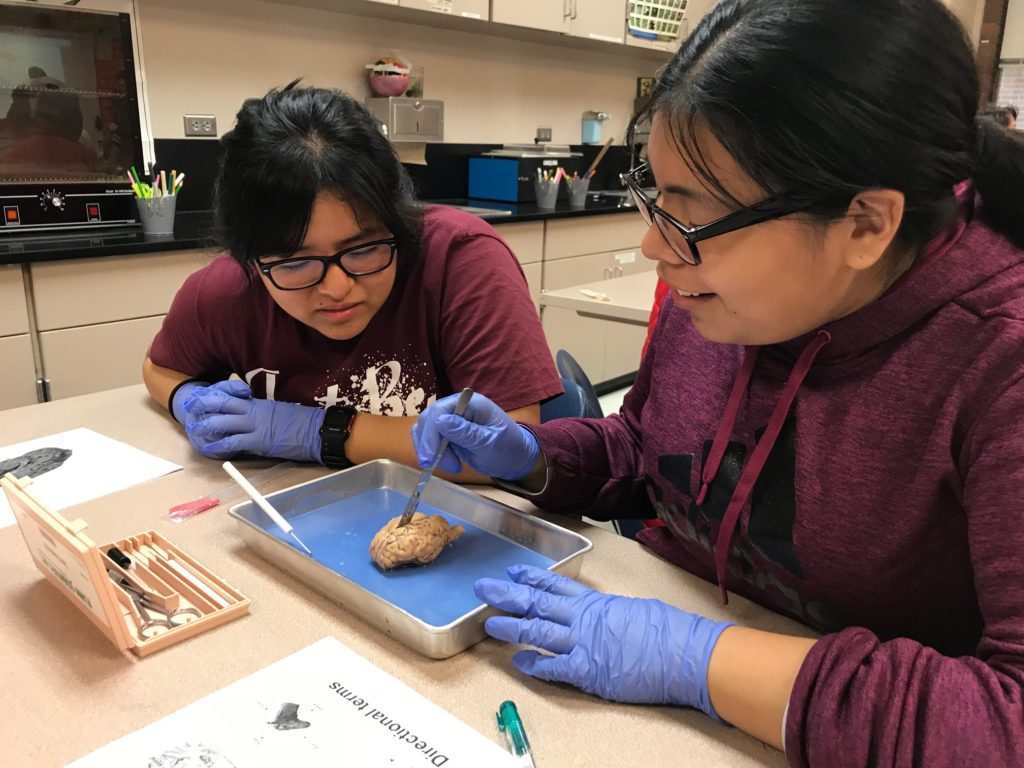
LEARN MORE: Teaching anatomy: cadavers vs. computers?
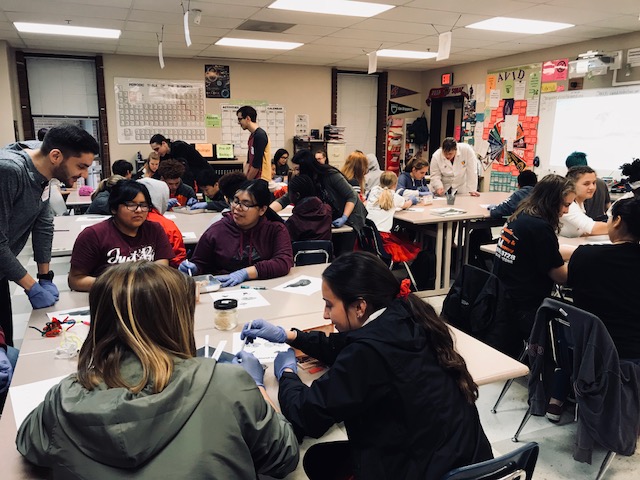
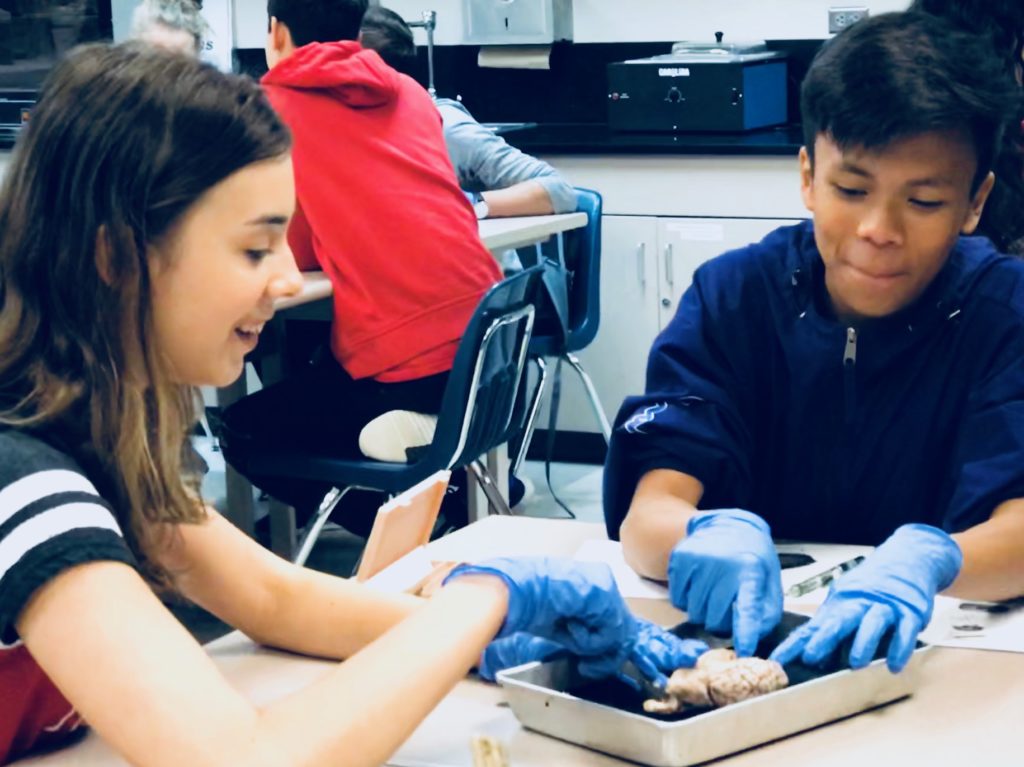
One student expressed appreciation for finally learning what a cerebellum was – after hearing the word in a pop song! For us to explain that the cerebellum controls motor function made the lyric that much more salient, and one I’m sure she’ll not soon forget…
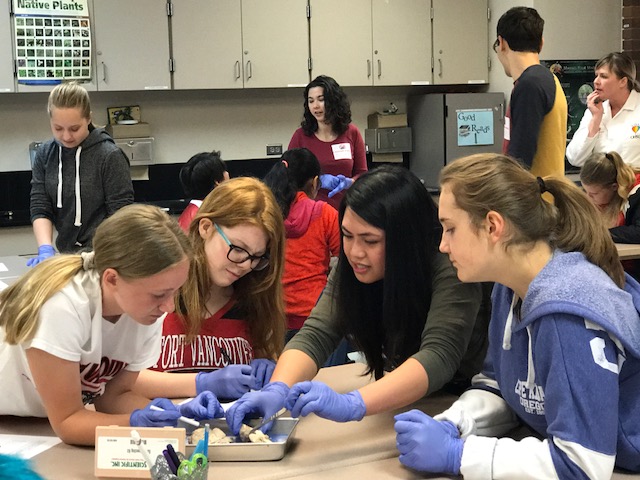
As we kept cutting, the questions and comments became more varied; one of the greatest things about neuroscience is that the brain controls and/or is connected to literally everything that we perceive and experience.
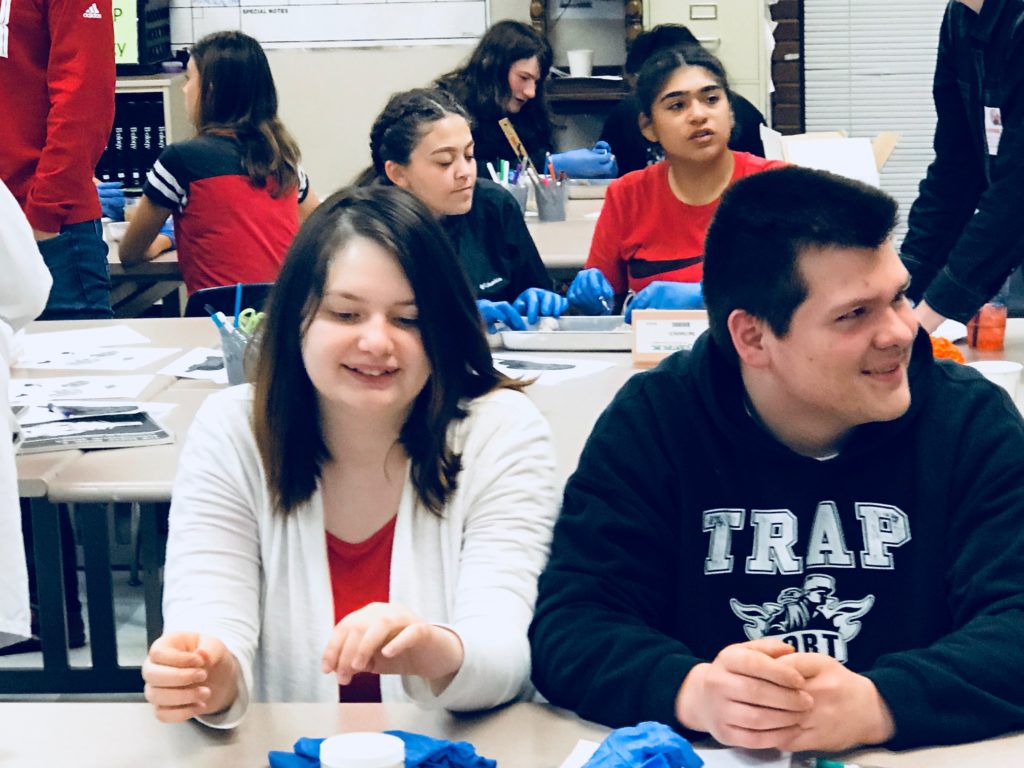
Students asked questions ranging from how drugs like marijuana and ayahuasca affect mood and performance, to what is bipolar disorder, what are hallucinations, how is the brain involved in gender identity, where are memories stored, how does the brain control intelligence (and are bigger brains smarter brains?), why do some people get autism, what causes ADHD, how do neural networks form – and so much more!
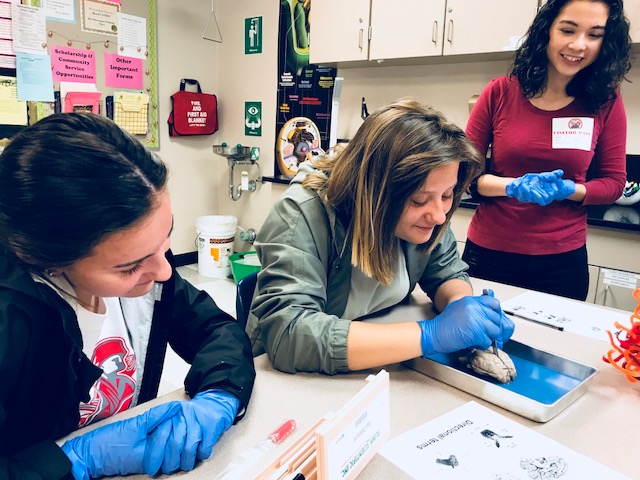
“So..the memory, what I see, everything – it’s all in here?!”

“Is it human? Do humans have these same parts?”

“Wait – different parts do different things? What does this part do?”
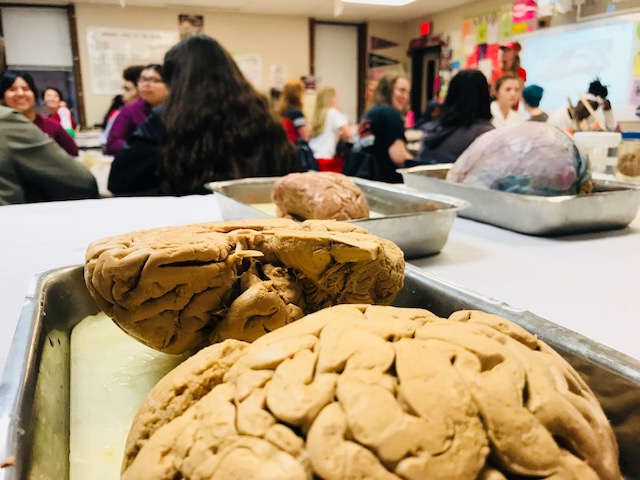
“Why do wires from the eyes cross like that?”
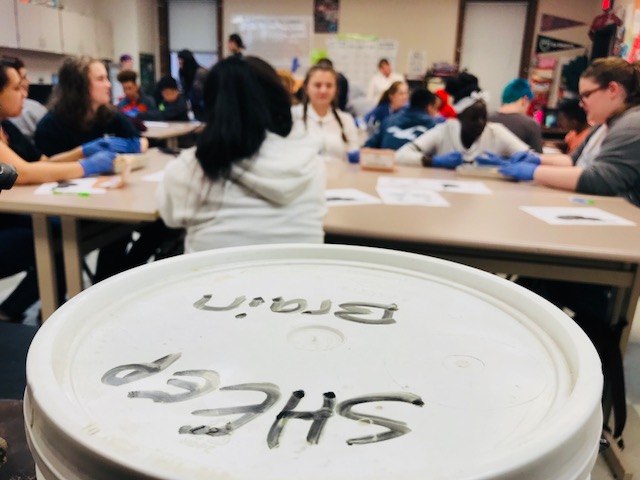
“Why are we the smartest animal on Earth? Are we the smartest animal on Earth?!”

“What is that skin on the brain?”
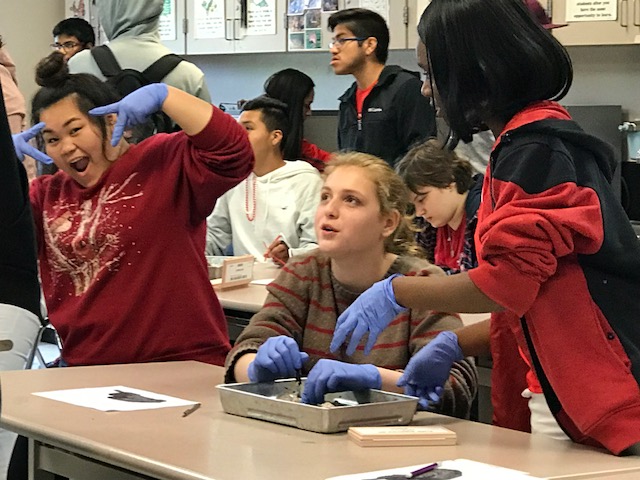
“Looks like chicken”
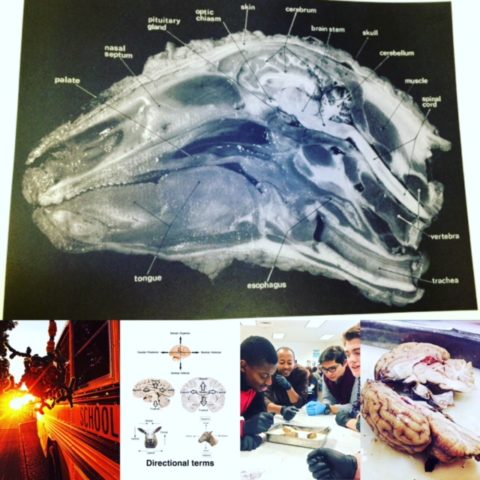
An added bonus to doing outreach is learning new things for ourselves. I learned, for example, that the answer to the question, “Which is bigger, a sheep’s brain, or its tongue?” is surprisingly (or not, if you know many sheep) “the tongue!” This is a fact I am now eagerly awaiting to share at my next dinner party.
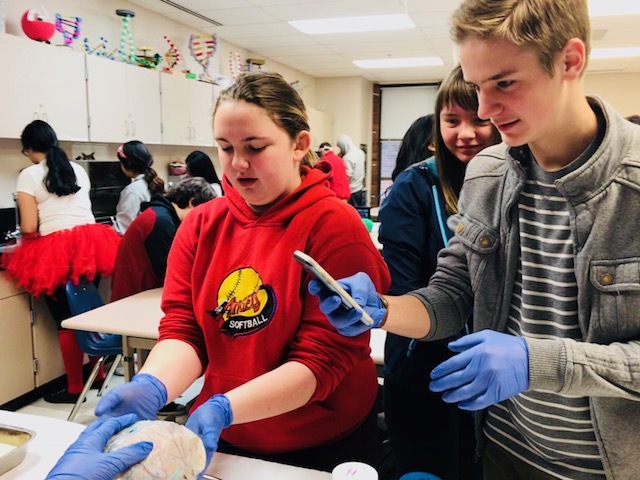
In spite of all of the benefits and rewards of studying and teaching neuroscience, exploring arts-related brain projects and tackling brain dissections, I also learned that the newest Washington State Science K-12 Learning Standards (most recently adopted in 2013) have no requirements for specific teaching about the brain before grade 3, and nothing at all after grade 8. They took the brains out of biology!
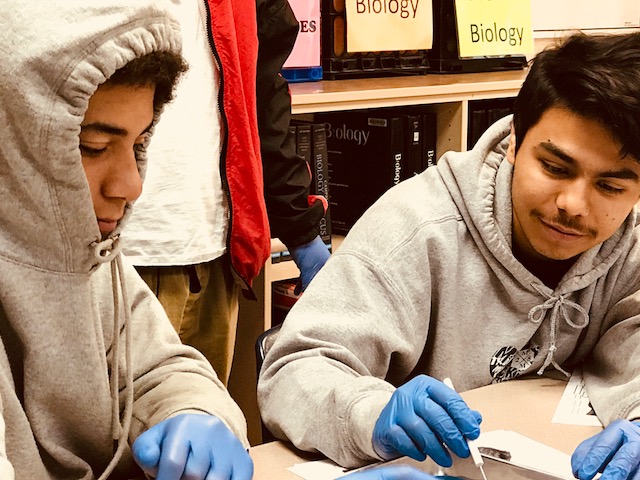
Although I am admittedly biased, this is a huge failing as many students will lose the opportunity to discover neuroscience without volunteer outreach efforts such as these today. Related, we also know that neuroscience can and should circle back and inform educational practices, and without some exposure to neuroscience in the classroom, we will have fewer students well versed in the field to help guide better practices moving forward…
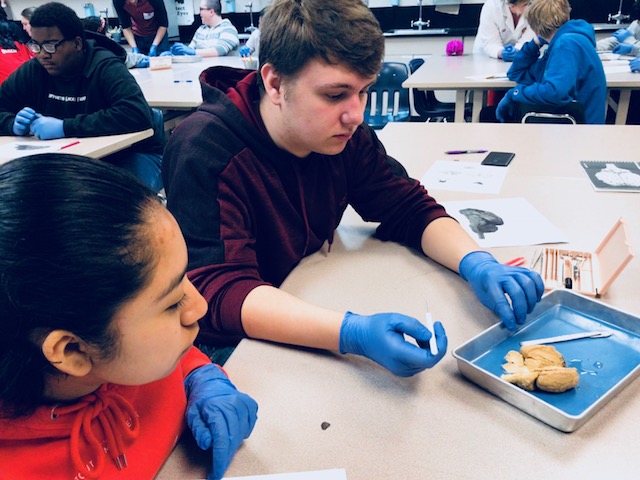
Many thanks to the students and teachers at Fort Vancouver. We look forward to returning this week!
